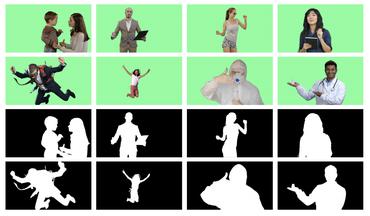Search Results for author: Kun Luo
Found 6 papers, 4 papers with code
BGE Landmark Embedding: A Chunking-Free Embedding Method For Retrieval Augmented Long-Context Large Language Models
no code implementations • 18 Feb 2024 • Kun Luo, Zheng Liu, Shitao Xiao, Kang Liu
In this work, we proposeExtensible Embedding, which realizes high-quality extension of LLM's context with strong flexibility and cost-effectiveness.
BGE M3-Embedding: Multi-Lingual, Multi-Functionality, Multi-Granularity Text Embeddings Through Self-Knowledge Distillation
1 code implementation • 5 Feb 2024 • Jianlv Chen, Shitao Xiao, Peitian Zhang, Kun Luo, Defu Lian, Zheng Liu
It can simultaneously perform the three common retrieval functionalities of embedding model: dense retrieval, multi-vector retrieval, and sparse retrieval, which provides a unified model foundation for real-world IR applications.
Adaptive Human Matting for Dynamic Videos
1 code implementation • CVPR 2023 • Chung-Ching Lin, Jiang Wang, Kun Luo, Kevin Lin, Linjie Li, Lijuan Wang, Zicheng Liu
The most recent efforts in video matting have focused on eliminating trimap dependency since trimap annotations are expensive and trimap-based methods are less adaptable for real-time applications.
Aharonov-Bohm Effect in Three-dimensional Higher-order Topological Insulator
no code implementations • 28 Jan 2021 • Kun Luo, Hao Geng, Li Sheng, Wei Chen, D. Y. Xing
Unlike AB interferometer of 3D topological insulator(TI), we find that there are different AB oscillation frequencies for a given direction of magnetic field in 3D HOTI.
Mesoscale and Nanoscale Physics
Graph Nets for Partial Charge Prediction
1 code implementation • 17 Sep 2019 • Yuanqing Wang, Josh Fass, Chaya D. Stern, Kun Luo, John Chodera
Atomic partial charges are crucial parameters for Molecular Dynamics (MD) simulations, molecular mechanics calculations, and virtual screening, as they determine the electrostatic contributions to interaction energies.
Cross-Domain Complementary Learning Using Pose for Multi-Person Part Segmentation
3 code implementations • 11 Jul 2019 • Kevin Lin, Lijuan Wang, Kun Luo, Yinpeng Chen, Zicheng Liu, Ming-Ting Sun
On the other hand, if part labels are also available in the real-images during training, our method outperforms the supervised state-of-the-art methods by a large margin.
 Ranked #1 on
Human Part Segmentation
on PASCAL-Part
(using extra training data)
Ranked #1 on
Human Part Segmentation
on PASCAL-Part
(using extra training data)




